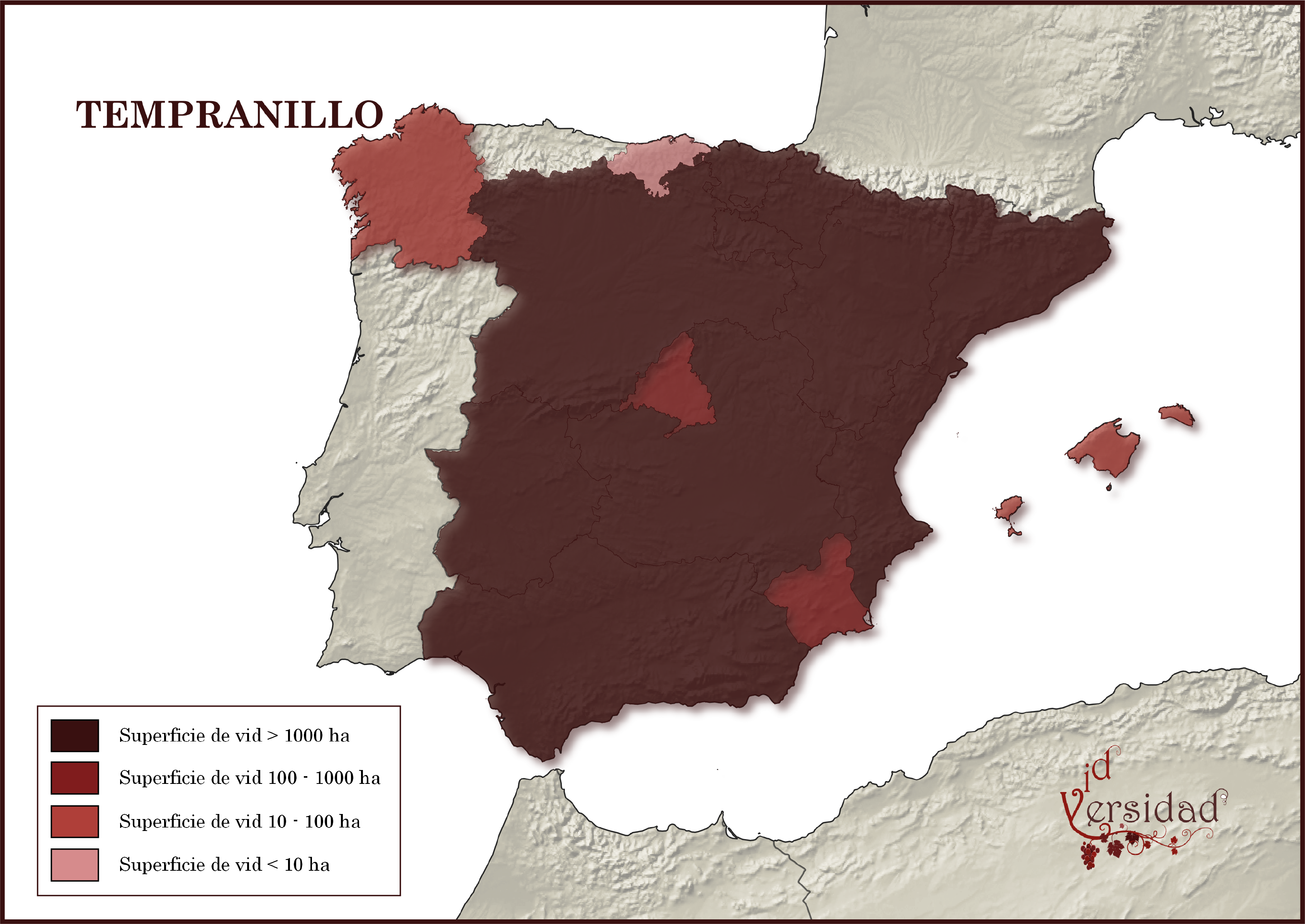
Tempranillo
- Geographical distribution
- Agronomic features
- Phenology
- Date of budbreak: medium-late
- Date of maturity: medium-early
- Oenological features
- Synonyms
Tempranillo, an autochthonous red winegrape Spanish variety, it is widespread throughout the Iberian Peninsula. It is authorized in 38 Denominations of origin, and it is considered as a preferential red grape in 14 of those. Nowadays, there are more than 200.000 ha of planted with this variety, which ranks as the second more widely planted variety in Spain, after Airen, the first if only red grapes were considered.
This variety is extremely sensitive to plagues and wood diseases as oïdium (Uncinula necator), esca (Stereum hirsutum and Phellinus igniarius), eutypa dieback (Eutypa lata). Also, it is susceptible to severe droughts and strong winds. It responds well to water supplies.
Tempranillo musts have an intense red color and are very aromatic. The wines have low acidity with low tannins and are relatively smooth and light. It is excellent to produce young wines by carbonic maceration. Acceptable for ageing in oak casks, which can yield very good results.
Aragón (BU), Arauxa (OR), Cencibel (CU, GU, M, CR), Chinchillana (BA), Escobera (BA), Morisca (CC), Palomino Negro (CA), Piñuela (TO), Tinta Corriente (GU) Tinta de Toro (ZA), Tinta Madrid (LE, ZA), Tinta Serrana (ZA), Tinto Aragonés (BU), Tinto Basto (TO), Tinto del País(VA, SO), Tinto Fino (AB, M), Tinto Madrid(M, TO, SA, SO), Tinta Roriz (PT), Ull De Lebre (B)